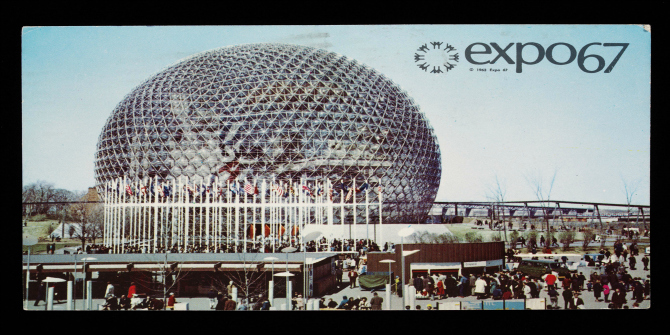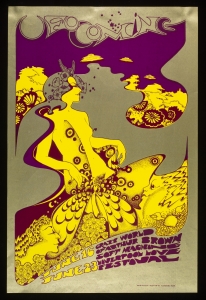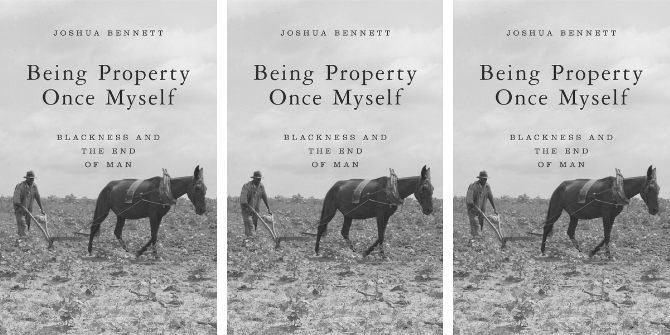 Image Credit: The Beatles Illustrated Lyrics, ‘Revolution’ 1968 by Alan Aldridge © Iconic Images, Alan Aldridge
Image Credit: The Beatles Illustrated Lyrics, ‘Revolution’ 1968 by Alan Aldridge © Iconic Images, Alan Aldridge
You Say You Want a Revolution?: Records and Rebels 1966-1970, the exhibition showing at London’s Victoria & Albert Museum until 26 February 2017, explores the ways that youth culture set out to create a better world through an optimistic idealism that motivated people to come together and question established power structures across every area of society. In this way it brought about the changes that have underpinned how we have lived for the past 50 years. The music, photography, posters, literature, design, film, fashion and performance that defined the counterculture illustrate how a whole generation shook off the confines of the past, radically revolutionising the ways they lived their lives. Yet the exhibition is designed to be as much about today as it is about these five years between 1966 and 1970. It surrounds the visitor in the politics, culture and society of the late 1960s as well as the inevitable parallels with life today: both the intended and unintended consequences and outcomes.
Following her discussion of the exhibition for the LSE Literary Festival 2017, currently exploring the theme of ‘Revolutions’ through a diverse programme of events, co-curator Victoria Broackes introduces five key objects to view in the show.
5 Key Objects to View in ‘You Say You Want a Revolution?: Records and Rebels 1966-1970’
 Image Credit: John Sebastian performing at Woodstock, 1969, © Henry Diltz / Corbis
Image Credit: John Sebastian performing at Woodstock, 1969, © Henry Diltz / Corbis
1). Utopia by Thomas More (1516)
The first object in the exhibition, a rare first edition in Latin of Thomas More’s famous work imagining an island where people and government live in a far greater system of equality and concern for the collective good than he experienced in his own lifetime, which celebrated its 500th anniversary in 2016 (and was also the theme of that year’s LSE Literary Festival). Of course, ‘utopia’ translates to ‘no place’, and so is somewhat of a paradox, yet the word continues to inspire people to think of what their version of a better world might look like. Oscar Wilde wrote in 1891 that ‘a map of the world that does not include Utopia is not worth even glancing at’, and perhaps this non-prescriptive vision best references an essential need in the human psyche: to strive for better.
2). ‘Earthrise’ photograph by William Anders (1968)
‘Earthrise’, the first colour image of our planet taken by humans from outer space, deriving from the Apollo 8 mission at the end of 1968, is one of the most influential images of all time. The repercussions of disseminating the image were monumental: the relative insignificance of the fragile blue planet in the universe was made clear, alongside its vulnerability. As such, ‘Earthrise’ reminded humanity that its future lay there and dampened what had throughout the sixties been a massive popular enthusiasm for all things extra-terrestrial. It was also partially responsible for the growth of the ecology movement at the end of the sixties, as people realised it was up to us as the planet’s inhabitants to look after it and live sustainably.
 Image Credit: Postcard from the Montreal World Expo 1967, Photograph © Victoria and Albert Museum, London.
Image Credit: Postcard from the Montreal World Expo 1967, Photograph © Victoria and Albert Museum, London.
3). Whole Earth Catalog, ed. by Stewart Brand (1968)
‘Earthrise’ also featured on the cover of the second and third issues of the Whole Earth Catalog (WEC). In his 2005 Stanford University Commencement Speech, Steve Jobs referred to the WEC as ‘one of the bibles of my generation’, ‘like Google in paperback form, 35 years before Google came along: it was idealistic, and overflowing with neat tools and great notions’. It was an inspirational publication as it not only gave access to tools – as its subtitle promised – but also gave people new ideas on how they might live and work – from geodesic dome construction and foodstuffs to computing and machine-building – always keeping sustainability and the future in mind. The final issue, released in 1975, had as its concluding words on the back cover: ‘Stay hungry, stay foolish.’ Brand’s continuing dedication to these precepts saw him establish the Long Now Foundation in ‘01996’ with the aim of fostering ‘long-term thinking and responsibility in the framework of the next 10,000 years’.
4). World passport belonging to George Harrison
There is an entire section in the exhibition devoted to the significance of the 1967 Beatles’ album Sgt Pepper’s Lonely Hearts Club Band, including John Lennon and George Harrison’s suits. On show alongside this is the Planet Earth Passport given to Harrison in around 1967 by peace activist Swami Vishnu-Devananda, which embodies the utopian thinking of the sixties and Harrison’s belief that, given the earth’s abundant resources, its citizens could collectively end suffering in the world. Its inscription, ‘Bearer born randomly on earth in Liverpool’, symbolises hope for a world without divisions, much like John Lennon’s lyrics to ‘Imagine’ (1971), and in stark contrast to today’s envisioned political ‘walls’.
 Image Credit: Anti-Vietnam demonstrators at the Pentagon Building, 1967, Photo by Bernie Boston / The Washington Post via Getty Images.
Image Credit: Anti-Vietnam demonstrators at the Pentagon Building, 1967, Photo by Bernie Boston / The Washington Post via Getty Images.
5). ‘Jerusalem’ words by William Blake (c.1804)
The final object in the exhibition, on view alongside John Lennon’s words to ‘Imagine’. William Blake was something of a ‘patron saint’ for the countercultural sixties, embodying the need to continuously quest for a better and fairer society. Much as More and Wilde wrote of a Utopia, in 1945 UK Prime Minister Clement Attlee made ‘Jerusalem’ the epithet for his view of an improved society, quoting directly from Blake’s poem when announcing the creation of the welfare state. Blake’s ‘Jerusalem’– from the preface to his epic Milton a Poem (published 1808) – has been used by all major UK political parties, first-wave women’s rights groups, in various major sporting events including the London 2012 Olympics and for other important events and campaigns.

These are just a handful of the objects that illustrate the optimism and imagination not only of the 1960s, but also well before the period and continuing into the present. The six ‘revolutions’ featured in the show have a music backbone of 250 LPs, borrowed from the collection of the late John Peel, the music broadcaster and DJ who broadcast the counterculture message and activities to a wide group of listeners in his pirate radio show, ‘The Perfumed Garden’. If you are interested in discovering more of the exhibition’s collection, You Say You Want a Revolution: Records and Rebels 1966-1970, runs at the V&A until 26 February 2017.
Image Credit: Poster for The Crazy World of Arthur Brown at UFO, 16 and 23 June, by Hapshash and the Coloured Coat, 1967, London (Michael English & Nigel Waymouth) Photograph © Victoria and Albert Museum, London.
Victoria Broackes is Senior Curator for the V&A Department of Theatre & Performance and Head of Festival for the London Design Festival at the V&A. She is co-curator of the major V&A exhibition You Say You Want a Revolution? Records and Rebels 1966-1970 and is currently working on Pink Floyd: Their Mortal Remains, which will open at the V&A in May 2017. In 2013 she co-curated David Bowie is, the fastest selling exhibition in the V&A’s history. This exhibition is currently touring the world and to date has been seen by nearly two million visitors.
Note: This feature gives the views of the author, and not the position of the LSE Review of Books blog, or of the London School of Economics. Images are provided courtesy of the Victoria and Albert Museum and should not be reproduced without the permission of the copyright holder.







